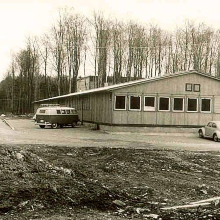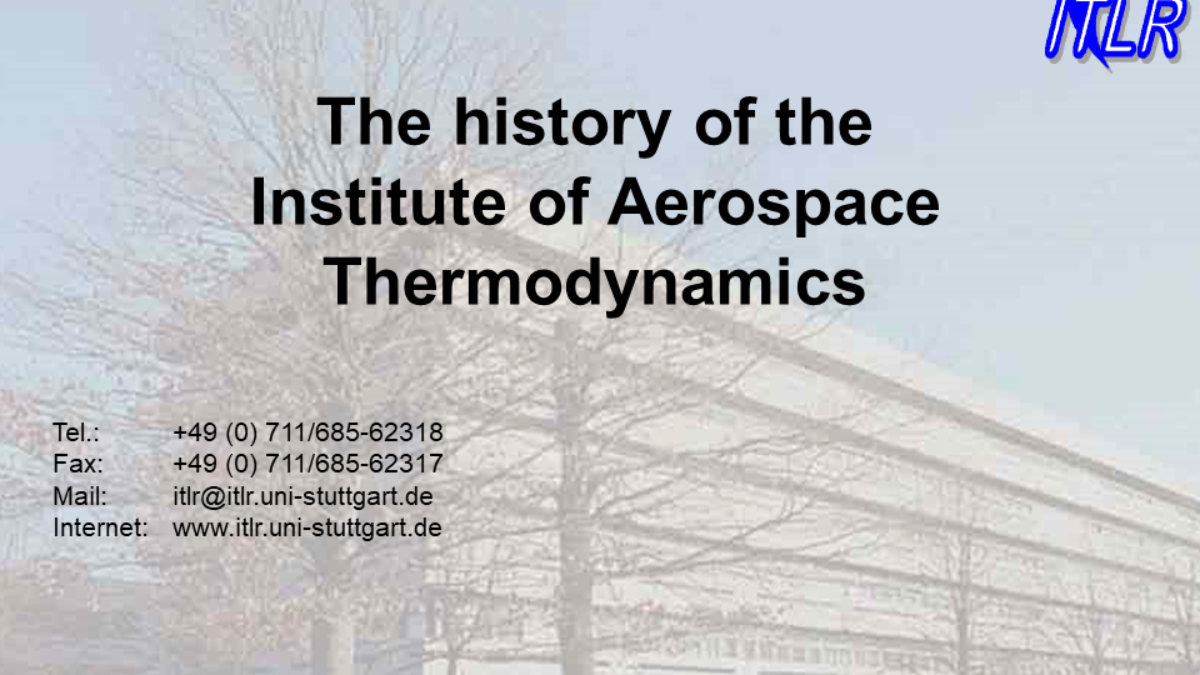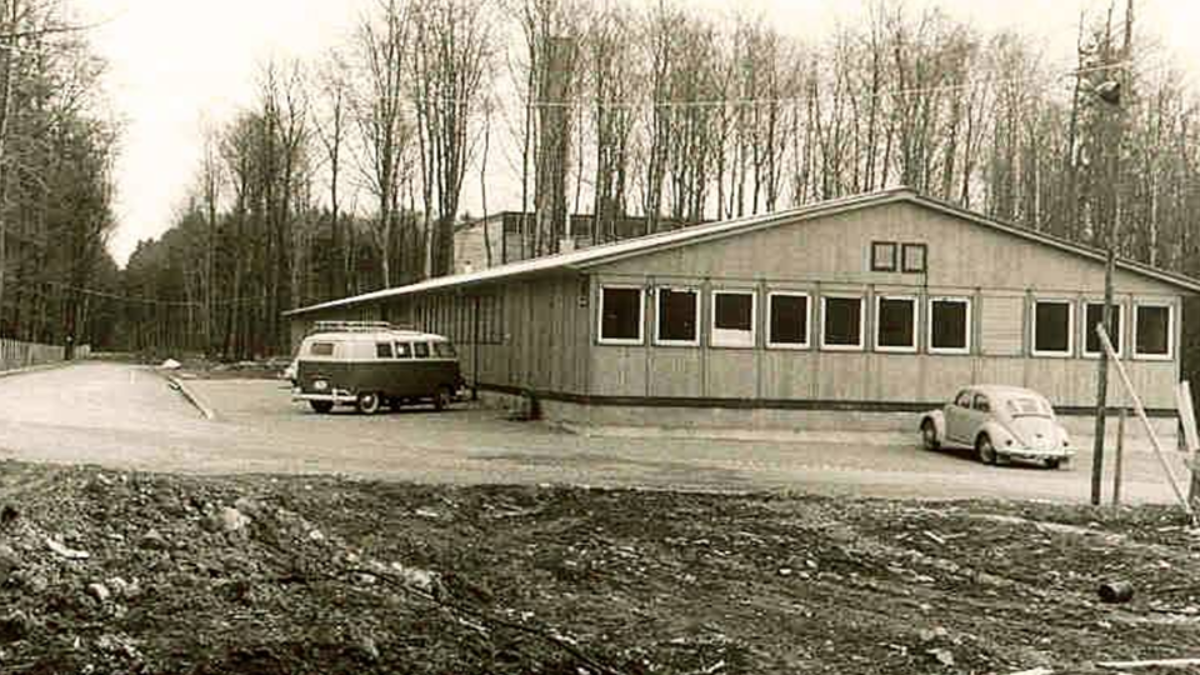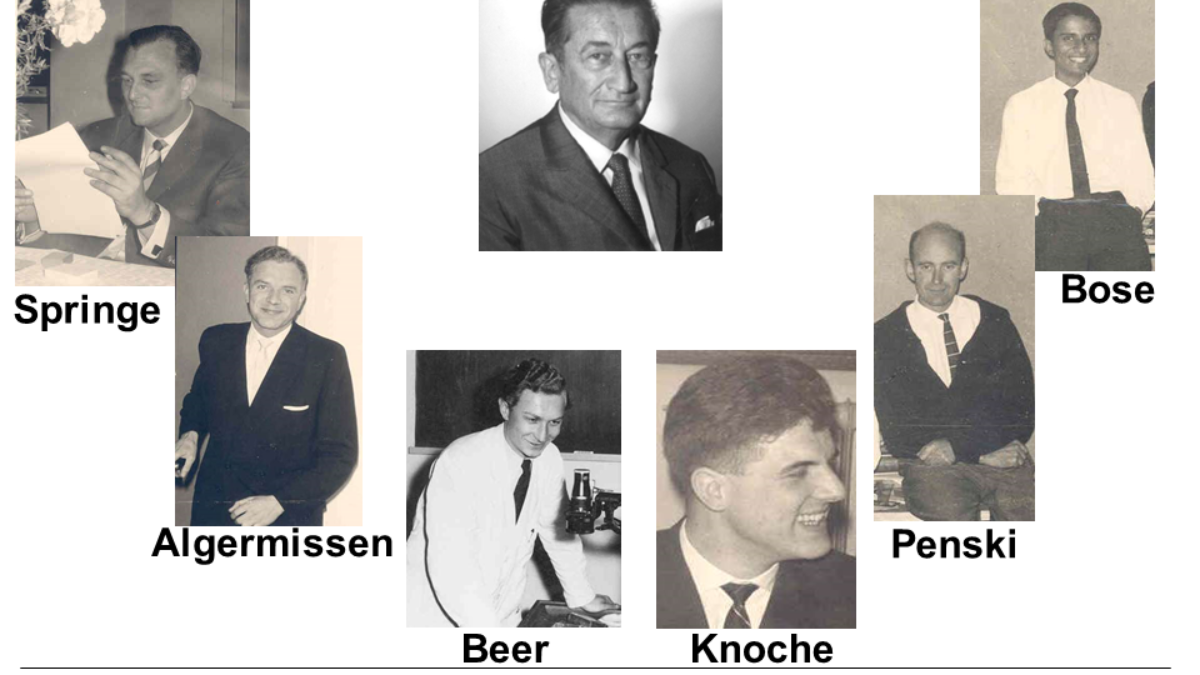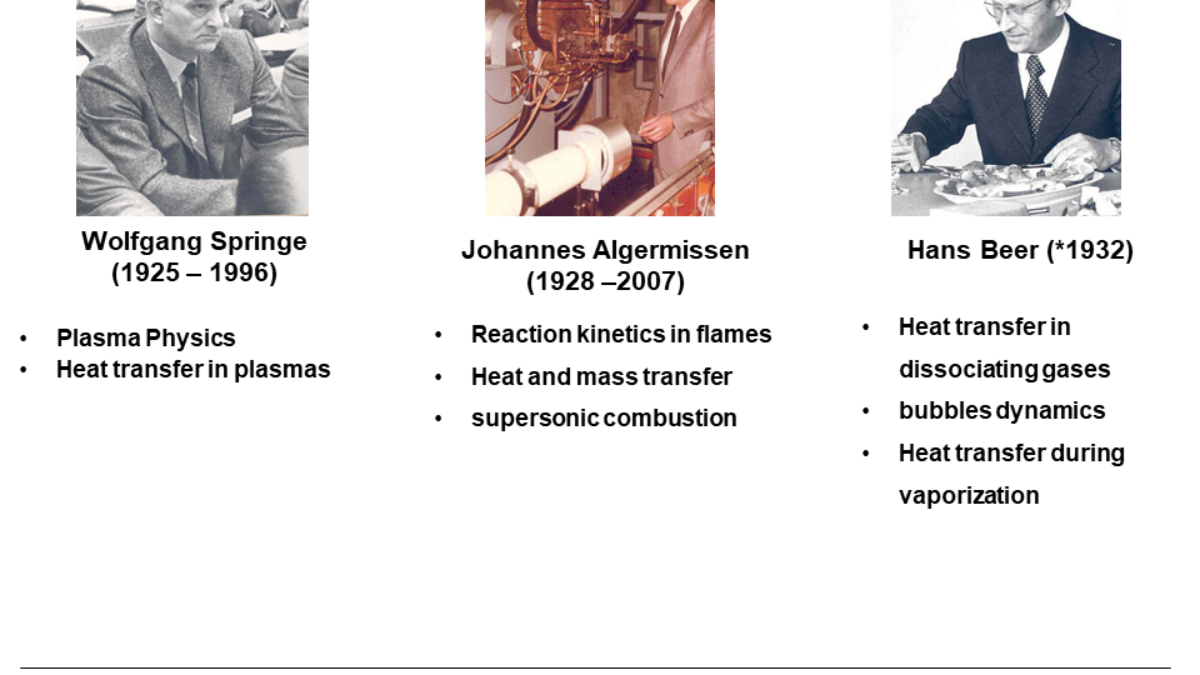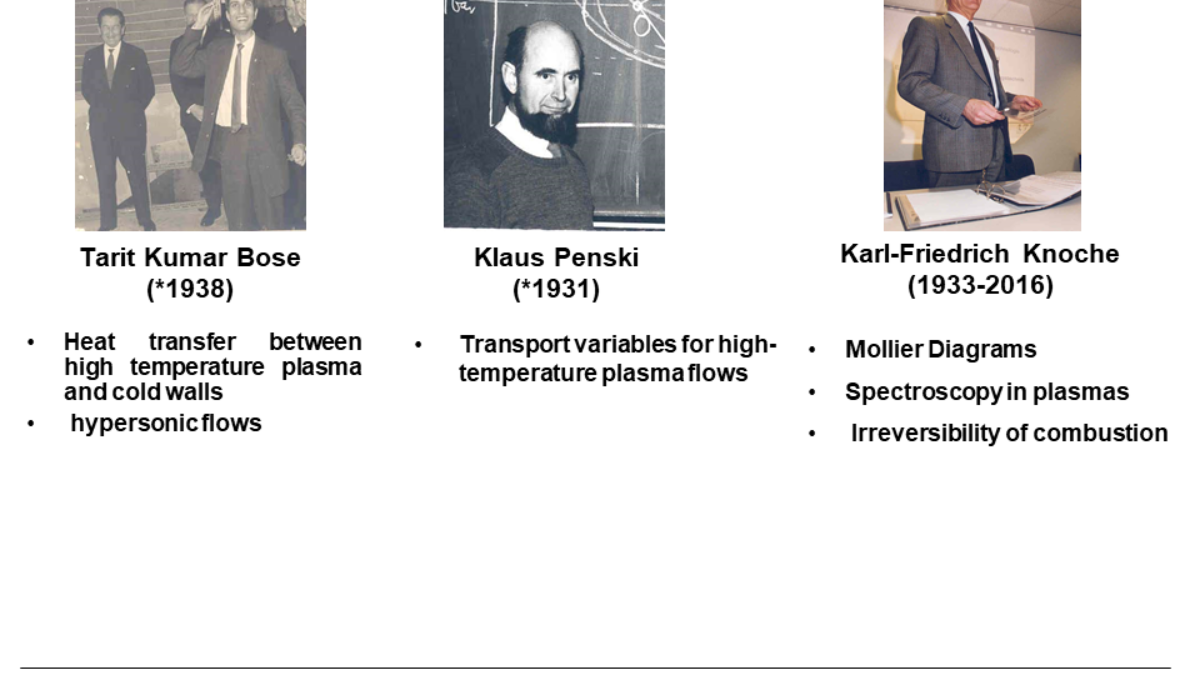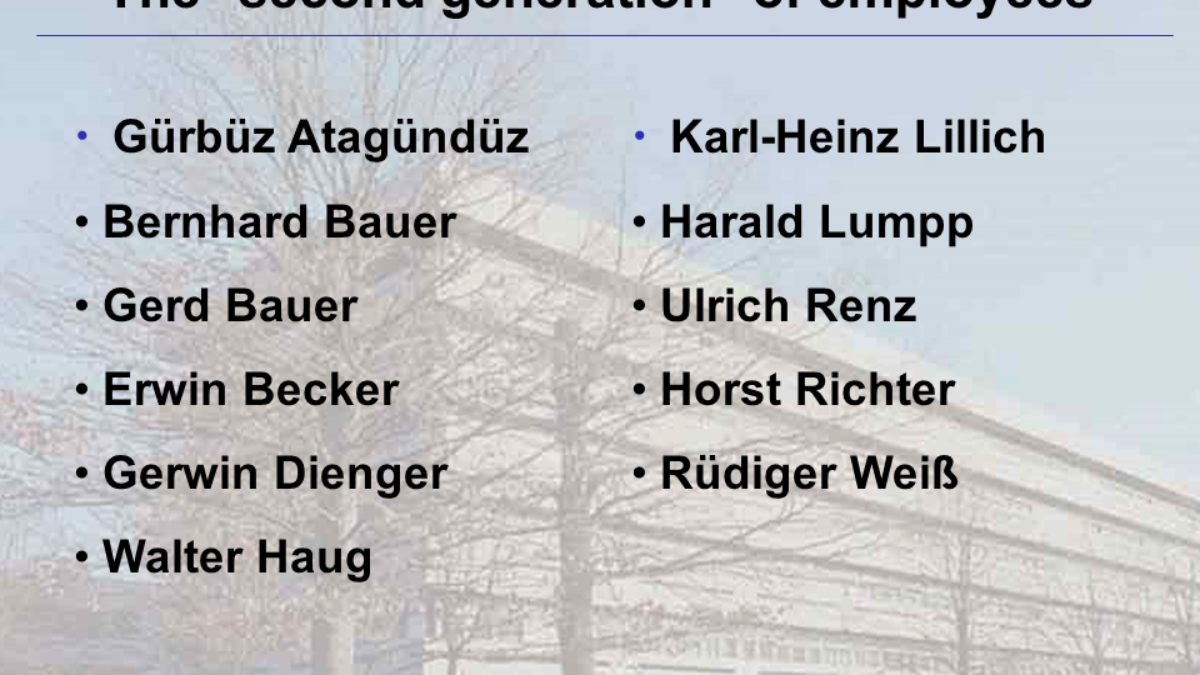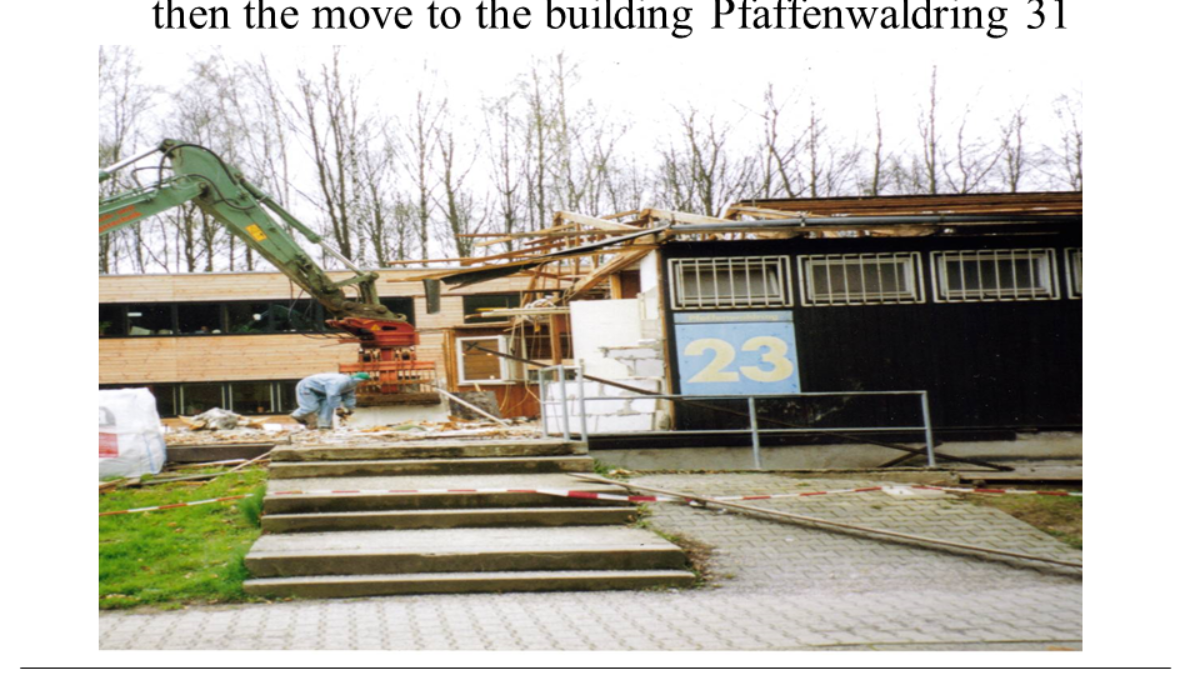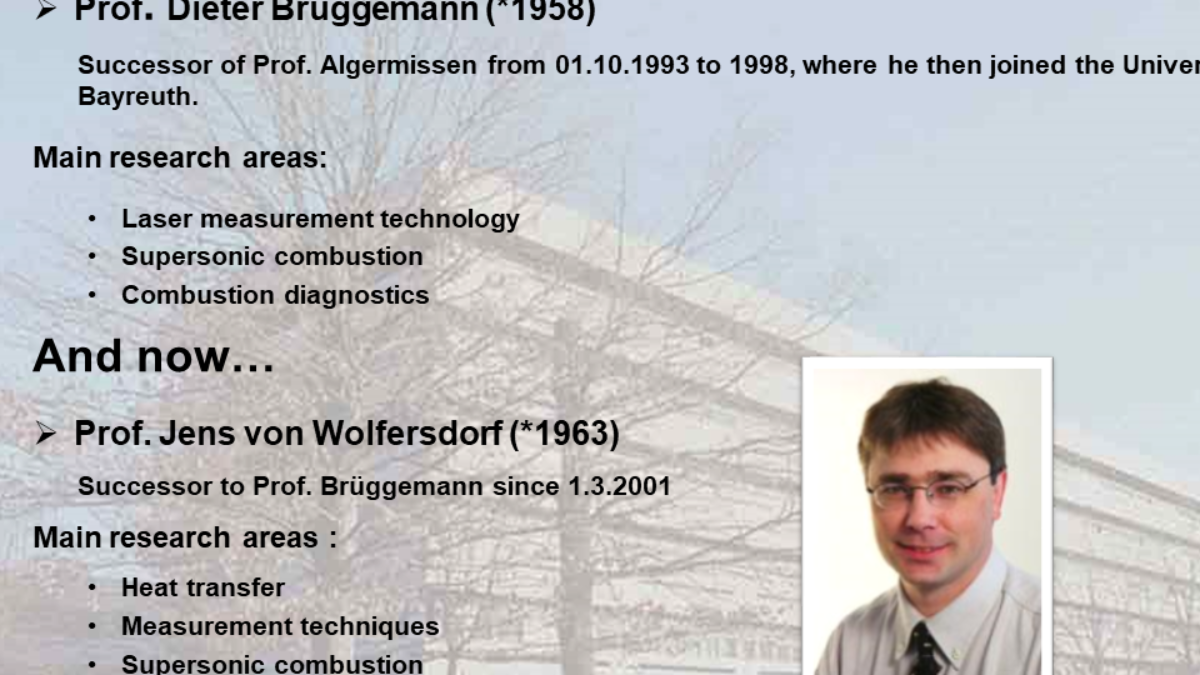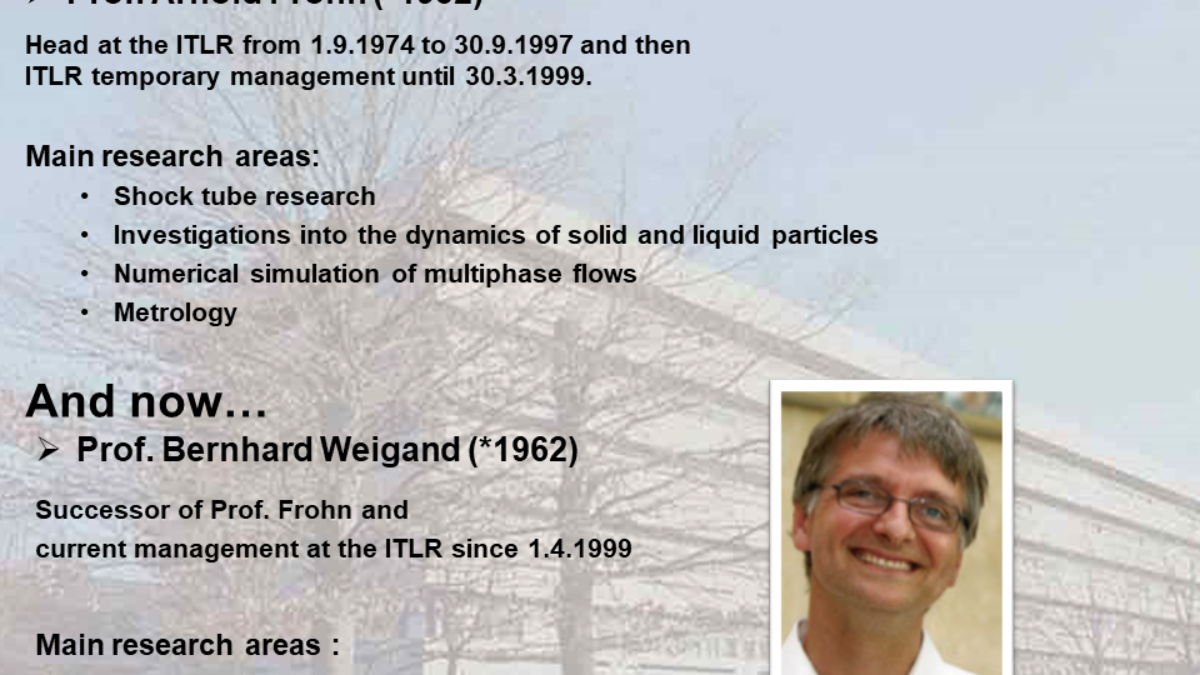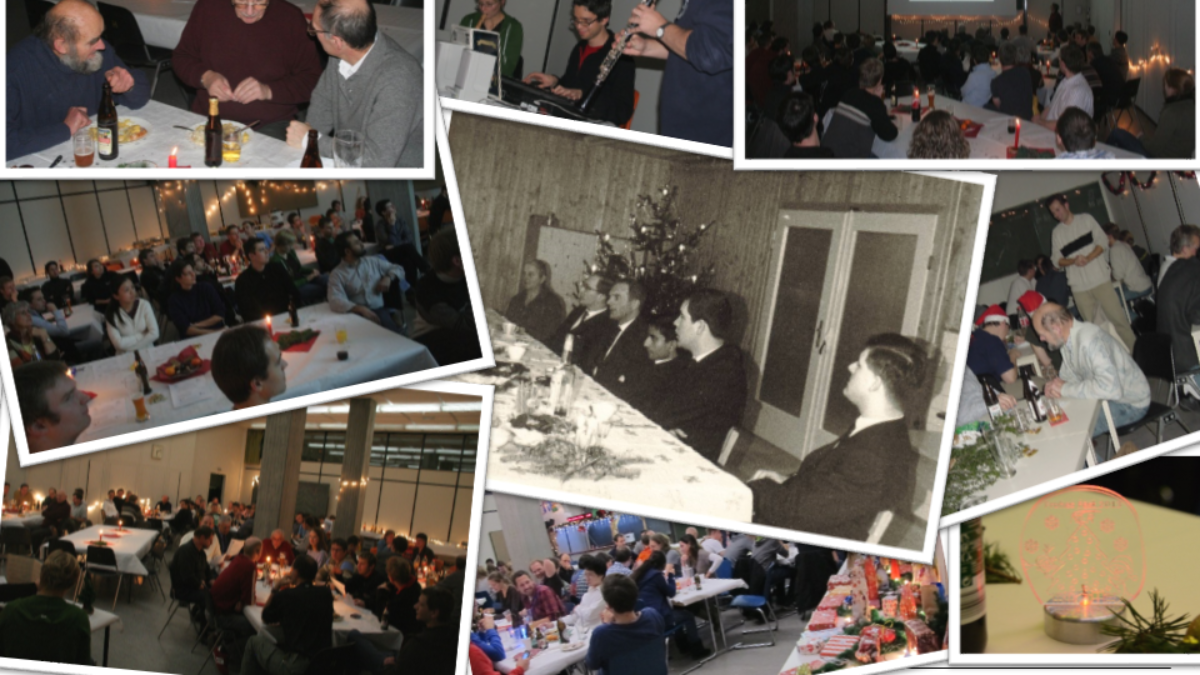The ITLR history summarized in pictures
More details about the ITLR history...
The institute was founded in 1961, when Professor Fran Bošnjaković with eight employees was called to Stuttgart. After temporary accommodation in a wooden huts, the new institute rooms with well furnished laboratory facilities were occupied in 1969.
As former assistant to Mollier, he devoted himself particularly to the treatment of thermodynamic state changes that were difficult to calculate only with enthalpy and entropy diagrams. His extraordinary ability to solve thermal engineering problems in diagram form led to a large number of papers and books on two-phase mixtures, absorption refrigeration processes, heat exchangers, combustion and gasification, chemical reactions, high-temperature plasmas and solar collectors. Very early on, he also dealt with avoidable energy losses and the associated concept of exergy, which had been coined by his friend Professor Rant.
Since he operated thermodynamics on a very broad basis, four research groups were soon established irreversible thermodynamics under Dr. Bernhard Bauer, mass transport and thermokinetics under Dr. Johannes Algermissen, radiation and plasmas under Dr. Friedrich Knoche and heat transfer under Dr. Hans Beer. These were later used to form departments as a prerequisite for the collegial management of the institute during the vacancy with Dr. Algermissen as managing director after Professor Bošnjaković retired in 1968. Of his students, Dr. Knoche followed a call to Aachen in 1969 and Dr. Beer to Darmstadt in 1972, while Dr. Algermissen and Dr. B. Bauer remained in Stuttgart. Dr. Algermissen was appointed professor in Stuttgart in 1974. His department mainly worked on reaction-kinetic calculations, Raman spectroscopy and shock-induced supersonic combustion, i.e. a supersonic flame ignited by an oblique compression impact. After his retirement, Professor Dieter Brüggemann took over his position at the ITLR in 1993. He continued his work and especially expanded laser spectroscopy.
Professor Arnold Frohn took over the chair in 1974 and headed the institute for almost 25 years. During these two and a half decades Professor Frohn was involved in numerous research activities and in teaching in an exemplary manner. In addition to the lectures Thermodynamics I to IV, which belong to the basic education of the students as compulsory lectures, he gave a number of advanced lectures such as Kinetic Gas Theory, Modern Measurement Methods of Thermodynamics, Aerosols or Special Problems of Energy Conversion, which showed his broad interest in thermodynamic questions. Professor Frohn succeeded in conveying the difficult subject of thermodynamics to his students in a remarkable way. The two books mentioned below are the result of his teaching activities:
- A. Frohn, Introduction to Thermodynamics, Wittwer-Verlag, Stuttgart, 1999
- A. Frohn, Introduction to Kinetic Gas Theory, Aula-Verlag, Wiesbaden, 1988
Under his direction, the students wrote a total of 254 student theses and 194 diploma theses.
Professor Frohn's research activities reveal a whole series of independent focal points and cover a wide range of thermodynamics. The following overview shows an excerpt from the individual research directions.
- Shock tube research
- Development of different measuring methods on the shock tube to determine e.g. the impact Mach number, wall temperature, degree of ionisation or gas composition
- Internal excitation states
- non-equilibria
- Investigations into the dynamics of solid and liquid particles
- Heterogeneous combustion
- Experiments on drop evaporation
- Experiments on the behaviour of droplets in collisions with each other and with solid walls
- Experiments with drops near the critical point
- Interaction of shock waves with particles
- Influence of sound waves on dispersions
- Acoustic levitation of particles
- Optical levitation of particles
- Numerical simulation of multiphase flows
- Lattice gas process
- Lattice Boltzmann process
- Method based on Navier-Stokes equations and the so-called "Volume of Fluid" method
- Measuring technique
- Development and application of various laser-optical scattered light measurement methods for the determination of drop parameters such as size, velocity and temperature.
- Adaptation of measurement techniques for the investigation of further thermodynamic phenomena.
His work has led to more than 160 publications, which have also found international recognition. The list of publications by Professor Frohn provides a more comprehensive insight into the research work carried out. An important part of this research led to the creation of the book
A. Frohn, N. Roth, Dynamics of Droplets, Springer-Verlag, Berlin, 2000
Within the framework of his research activities, a total of 25 doctoral theses have been written under his supervision. Numerous research projects carried out by industry, the Volkswagen Foundation and, in particular, the German Research Foundation (DFG) have made his extensive research activities possible, in addition to being funded by the state of Baden-Württemberg.
Professor Frohn retired on 30 September 1997. He continued to lead the institute on a provisional basis until the appointment of a new professor on April 1, 1999.
Professor Bernhard Weigand has headed the Institute since April 1, 1999. In addition to the already existing work focuses on drip dynamics and supersonic combustion, the institute now has a further focus on heat transfer. Special interest is given to methods for the intensification of heat and mass transfer and their numerical simulation.
On 1 March 2001 Professor Jens von Wolfersdorf succeeded Professor Brüggemann, who was appointed to the University of Bayreuth in 1998.
Professor von Wolfersdorf's research focuses on heat transfer and especially on the intensification of heat transfer and the modern experimental methods required for this. Furthermore, he conducts intensive research in the field of supersonic combustion.
Contact Persons

Bernhard Weigand
Prof. Dr.-Ing. habil.Director
Susanne Stegmeier
Secretariat/Administration


